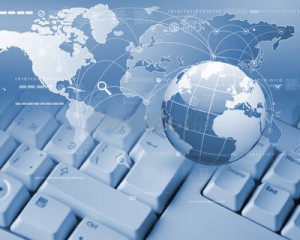
Physical Therapy Software Future
Having a physical therapy software seems hard at first, but the practice and the staff will benefit from it in the long run. Nitin Chhoda discusses how EMR should be introduced to the practice in order to meet goals, and give your staff the right perspective.
 Successful adoption of any new technology is going to take a bit of time. Most practices that adopt physical therapy software end up spending some inefficient weeks getting into gear with their new workflow.
Successful adoption of any new technology is going to take a bit of time. Most practices that adopt physical therapy software end up spending some inefficient weeks getting into gear with their new workflow.
But once everyone is on board, the latest physical therapy software systems provide convenience and efficiency where there were once hold-ups and time wasted.
Practices can see more patients, have better interactions with patients, and are more likely to collect payment from insurance companies.
Re-Imagining the System
The hardest part is going to be changing the way that the physical therapy software and management and staff think about the job they do. As the next generation of physical therapists and medical assistants is educated, they will be taught how to use physical therapy software as part of essential training.
Just as only a generation ago, nobody used email to communicate, the rapid changes in technology can seem to happen overnight for those who don’t realize what was done before.
To re-imagine a more streamlined and efficient physical therapy practice, some of us have to work hard to forget the ways we’ve always done thing. For every physical therapy practice that adopts physical therapy software, training will be essential.
Managing the staff’s expectations about what it will be like with the new system will be a big job for the practice management. Some staff members may be downright stubborn about changing the way they’ve done things. If they’ve always done their job a certain way, and it works, why would they change now?
Start With Staff Training
Implementation has to start with staff education and buy-in. There should be inspirational slideshows and meetings about the way the practice could run if everyone gets on board and uses physical therapy software.
Staff should know that they will be supported with training, time to adjust, and relatively low expectations at first.
Management and the implementation team must get the idea in everyone’s head that the change will not be easy, but it will be worth the work. If physical therapy software staff members expect it to be a simple switch, they will be frustrated even more by the challenges.
 If they don’t feel it is worthwhile, they will dally with training and the transition will be slower and more difficult than necessary.
If they don’t feel it is worthwhile, they will dally with training and the transition will be slower and more difficult than necessary.
But if the right image is portrayed from the start, everyone will know what to expect and they will understand why they are doing what they’re doing.
Physical Therapy Software of the 21st Century
The next decade is going to see an increase in demand for medical services, including physical therapy. The only way to take advantage of increased patient demand is to increase your capacity as an office.
The investment into physical therapy software may feel like a burden at first, both financially and in time, but if your practice is going to survive and thrive in the new economy, streamlining the way you provide services will be essential.



















